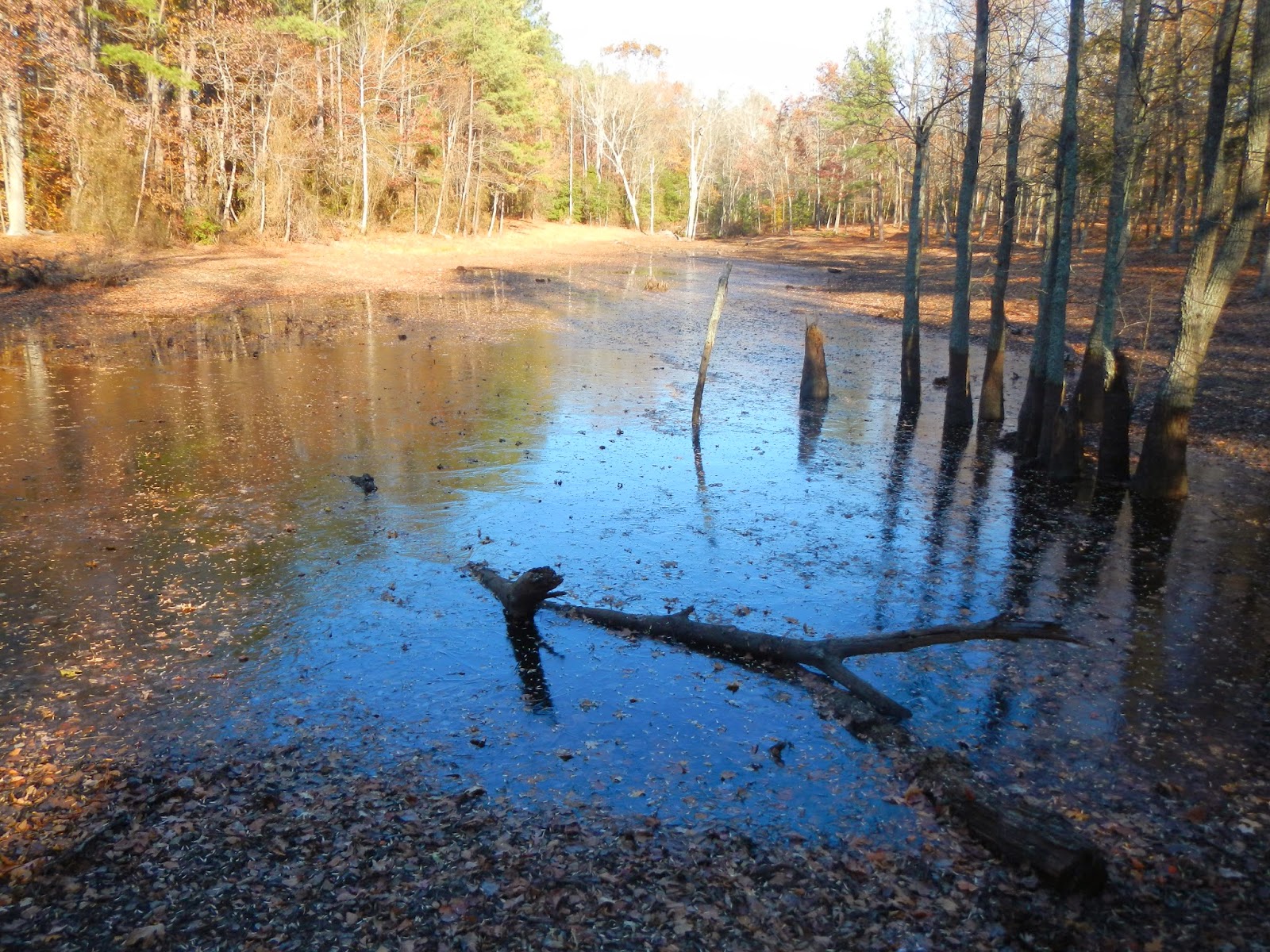I used my DeLorme inReach to capture my track. The red arrows show my hiking directions, part of the walk being an "out and back." You can see that a lot of the ground is heavily wooded, but in June 1864, most of it was open ground that led to wholesale slaughter as large armies clashed across seven miles of battle fortifications. The battle lasted from June 1 through June 12, but the worst fighting happened on June 3. After that, the action was nine days of miserable trench warfare in the broiling June sun.
The walk is easy - especially compared with the difficult times that the two armies had. It goes past lots of incredibly well-preserved trenches and other earthworks that are now more than 150 years old. It is sobering to walk in this peaceful place now and imagine what it must have been like. Some of the Union dead, including many unknown soldiers, are buried at the Cold Harbor National Cemetery. There were 13,000 Union and 5,000 Confederate casualties here.
The guns are silent here now - I call that a good thing!
The Garthright House was used as a field hospital as artillery shells crashed around. The lady of the house cowered in terror in the cellar as blood from the injured men above seeped between the floorboards.
Here is one example of 150 year old trenches. In 1862, the armies here clashed in charges across the battleground. But two years later, one army (the Confederates) dug in as the other charged them. This was the precursor to the awful trench warfare of World War I.
Since I was last here, they added some more trails and one of them goes past this pretty new battlefield monument, dedicated to the 2nd Connecticut Volunteer Heavy Artillery, which suffered pretty horrific losses in the state. It is a nice thing to remember those who made such sacrifices so long ago.
Believe it or not, most of this small pond was coated in ice! That is really rare for Richmond in November.
These trench lines would have been totally in open land at the time of the fight, but now, a park-like forest grows around them.
This steam is named Bloody Run. It is clear and refreshing looking now, but 150 years ago, it likely ran red with blood. Something like 7,000 Union men fell in about 30 minutes on June 3, 1864. One placard talked about a description of a regiment melting away like a snowfall in the summer.
I enjoyed having the time to take a little hike on a cold Friday, and to reflect on the long-ago sacrifice by so many Americans.

















Beautiful pictures. Hard to imagine such dreadful things happening on such a beautiful place.
ReplyDeleteIt's sad to think of all of the suffering that occurred here.
ReplyDelete